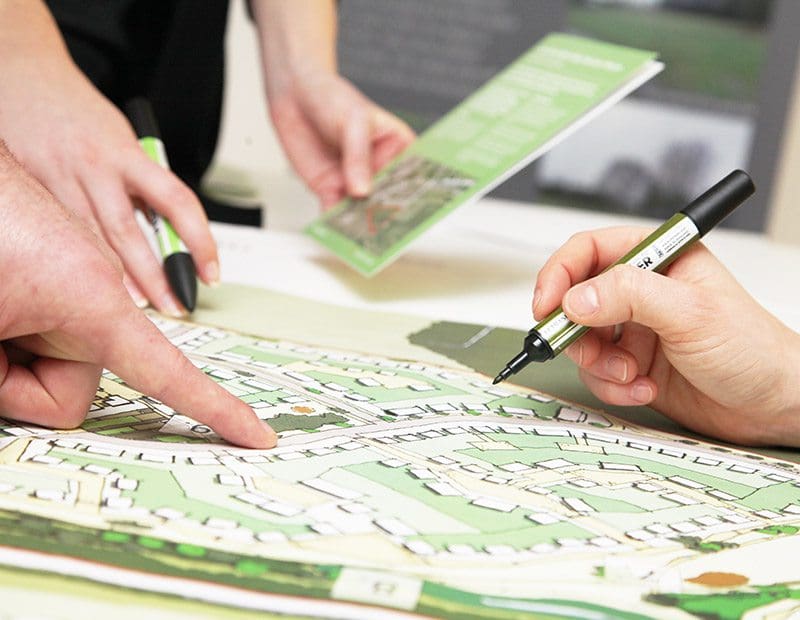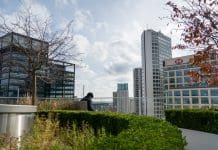With the British economy lagging behind the US, Japan and Germany, could the design of our cities be at fault by failing to recognise how transport links, office building design and green spaces can be a key driver of productivity? Jeff Nottage, design director at Turley, looks how urban design can deliver growth
The UK’s productivity currently falls short when compared with France, Germany and the United States.
Figures show the States has 28% more value per hour than the UK, while France and Germany outperform the UK by 13% and 14% respectively.
While macroeconomic factors like monetary policy, Brexit and the lingering effects of COVID-19 contribute to stagnated productivity, they alone cannot entirely account for the UK’s underperformance. Another critical factor lies in the UK’s infrastructure choices and built environment designs.
Over 80% of the UK’s population live in urban areas
Productivity tends to rise with city size based on population and employment for most countries.
However, according to the Organisation for Economic Co-operation & Development, for every 10% increase in the size of UK cities, productivity only nudges up by 0.09%, while other countries see a 0.3% bump.
With over 80% of the UK’s population living in urban areas, it is clear that we need to re-evaluate our urban design choices to understand our productivity shortcomings and address these challenges head-on.
How good urban design can contribute to happier, healthier communities
The crucial link between our urban environment and overall wellbeing is well-known, yet it is continually overlooked in planning policies – especially within city centres.
Evidence shows a healthier, happier workforce can be up to 20% more productive.
We also saw approximately 35.2m working days lost in 2023 due to work-related injury or illness.
This underscores the urgency of creating infrastructure that prioritises the wellbeing of individuals as it has the cumulative impact of increasing overall productivity.
A holistic approach to enhancing the built environment is paramount.
This involves considering various factors such as ensuring access to green spaces, maintaining good air quality, harnessing natural light, minimising noise pollution and facilitating access to transit networks.
By adopting this people-centric perspective, we can foster environments where communities thrive.
Active transportation
The influence of active transportation infrastructure (eg cycling, walking, running) cannot be overstated in shaping the physical and mental health of urban residents.
Individuals living in communities that prioritise these modes of transport tend to be less stressed and more active, than those who travel by car, as driving is considered the most stressful form of transport as drivers must budget extra time to deal with delays and are more stressed by journey disruptions.
The UN World Happiness Report 2023 highlighted Denmark as the second happiest country worldwide, attributed, in part, to its promotion of cycling infrastructure. In fact, Copenhagen ranked as the best city in Europe to cycle.
This fosters improved overall wellbeing, which has the cumulative effect of increasing productivity. Healthy individuals are more likely to be focused, energetic and engaged, contributing to a positive work environment and heightened productivity levels.
Communal areas
Given the ongoing prevalence of hybrid working, towns and cities should introduce local co-working spaces and amenities. This innovative approach enables office workers to divide their time between the corporate office and shared workspaces or local cafes, potentially mitigating the risks of isolation and declining mental health associated with hybrid working.
By fostering a collaborative and dynamic work environment, these local co-working spaces not only address the challenges of remote work but also provide opportunities for networking, idea exchange and collective problemsolving. This, in turn, can contribute to heightened creativity, job satisfaction and ultimately increased productivity among employees.
Reviving the High Street
The embrace of the co-workspace model is particularly pertinent for satellite or commuter towns surrounding major cities, many of which have suffered from the decline of retail.
Offering residents the opportunity to work in vibrant, social spaces closer to home can play a pivotal role in revitalising town centres, improving mental health and reducing the environmentally unsustainable daily commute.
By creating a conducive work environment within these local spaces, individuals can not only benefit from reduced stress associated with long commutes but also find themselves in a setting that fosters increased focus and efficiency.
The convenience and accessibility of these co-workspaces contribute to a healthier work-life balance, ultimately enhancing productivity among the town’s workforce.
Embracing change in workspaces
The landscape of workspaces in the UK is undergoing a significant change due to the shift towards hybrid working and the impact of Covid-19. Data from Leesman shows that 74% of employees only plan to be in the office two or fewer days a week. This emerging pattern suggests we are experiencing the “death of the traditional office market”.
As a result of this, some companies have downsized and consolidated their office spaces, moving into a single office instead of having multiple locations.
A high-profile example of such a corporate departure is Facebook owner Meta recently paying a record £149m to exit its lease early on its offices at 1 Triton Square, Regent’s Park.
While the number of flexible office spaces in the UK is expected to almost double between 2019 and 2023, reaching 167m sq ft by 2023, the reduced demand for office floorspace overall provides an opportunity for us as a nation to rethink how we use office real estate.
Buildings could be adapted into residential-led mixed-use schemes, echoing the successful regeneration of former industrial buildings. Repurposing dated office buildings could bring more affordable housing into city centres – boosting workforce numbers and cutting down on unproductive commuting times.
Care must, however, be taken to ensure that such repurposing is done in a way that creates accommodation that is high quality, sustainable and fit for modern living.
In the longer term, less demand for office floorspace could free up innovative thinkers to evolve the way we design workspaces for the better – studies have shown worker satisfaction improves in offices with access to greenspace, daylight and fresh air.
One possible example of good design is designing lower-rise structures situated around courtyards and shared spaces, which could help create engaging, healthier workspaces.
Reimaging urban spaces to tackle the productivity crisis
The UK’s challenge with stagnating productivity extends beyond economic factors to urban design and minimal productivity gains with city size increase highlighting the urgency for reassessment.
Prioritising factors like green spaces, active transportation and communal areas are crucial for boosting productivity. The move away from traditional offices offers an opportunity to creatively repurpose real estate.
Reimagining urban design with a people-centric perspective can tackle the productivity crisis and contribute to healthier, happier communities.
Jeff Nottage
Design director
Turley
Tel: +44 (0)161 233 7676














